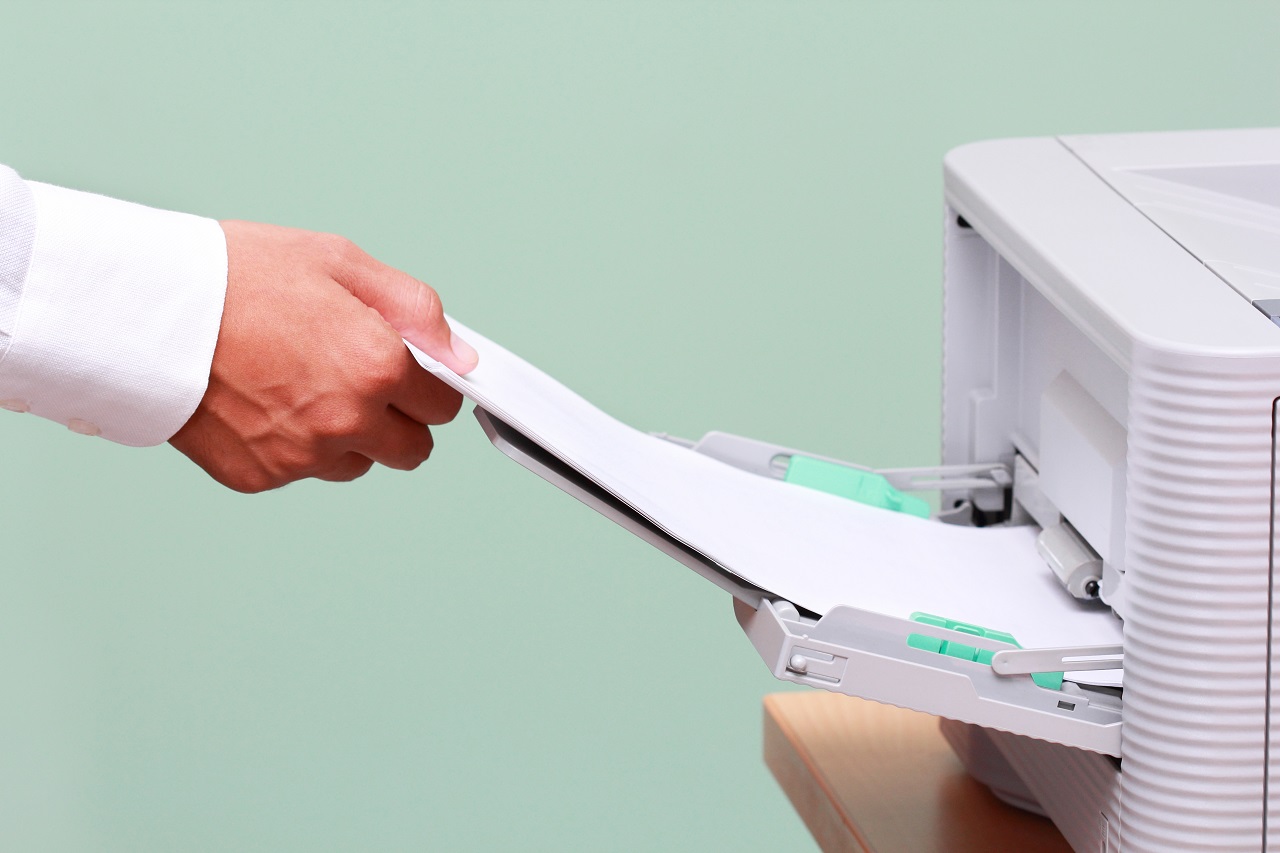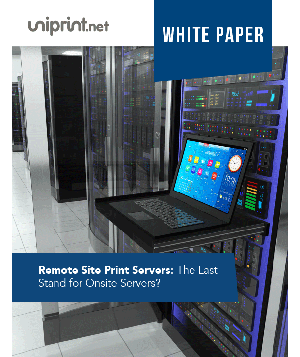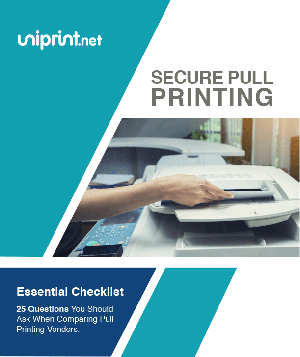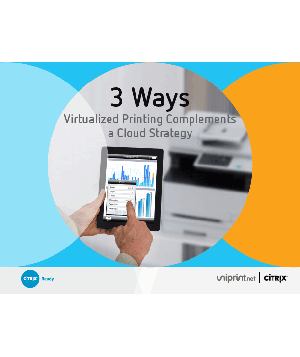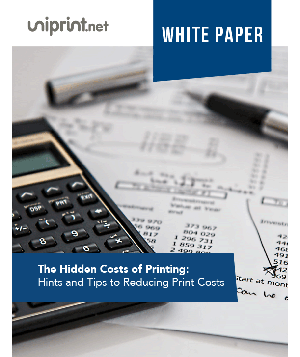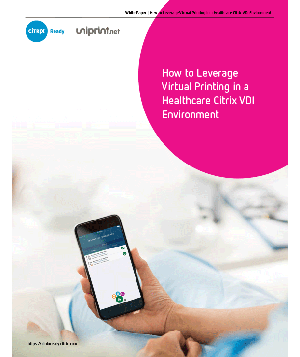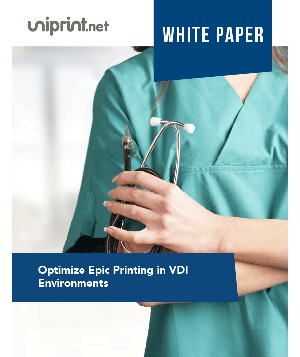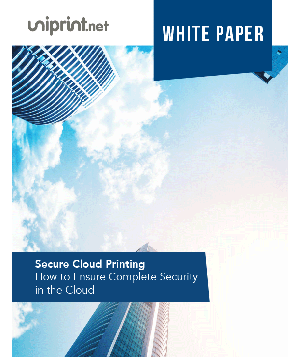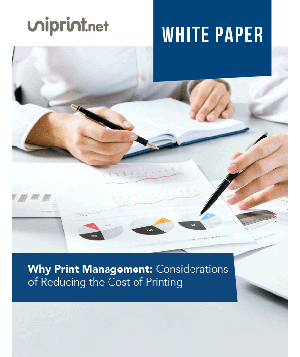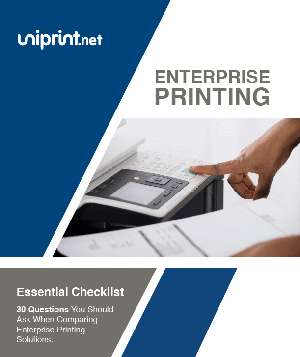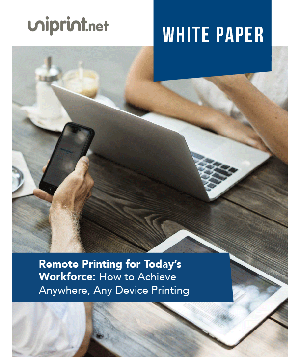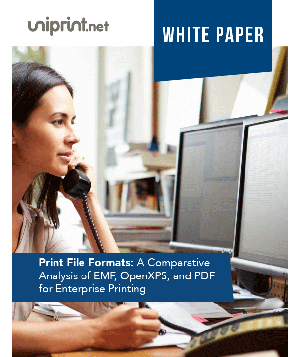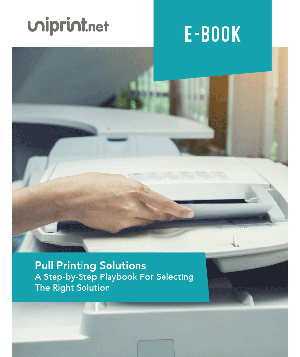Pull Printing Explained: The Costs & Benefits of Deploying Pull Printing
No matter what industry you are in, every business would like to improve their workflow, become more productive, secure and reduce costs in all areas of the organization.
With printing, this can be solved by installing a piece of software that enables pull printing.
But what is pull printing and how can your business benefit from it?
What is Pull Printing?
Pull printing is when a user’s print job is held on a server (server-based printing) or on a user’s workstation (serverless printing) and can be released by the user from any printing device.
To be released, the user needs to authenticate themselves at the printer, either using embedded software or external print release appliances.
Once authenticated, the user may select print jobs they wish to be released.
Why is Pull Printing important?
Pull printing adds an additional layer of security for enterprises.
So often you hear about important or confidential documents being left in the printing tray for others to view or even take.
Secure pull printing eliminates this risk by ensuring that the user is in control of the print job – they can execute with exactly where and when they need it to make sure it ends up in the right hands.
Benefits of Pull Printing
In addition to security, pull printing offers several other benefits enterprises can take advantage of:
1. Reduce Printing Waste
Since many organizations have shared printers, employees are required to make their way to the printer and pick up their documents.
Often, they can get interrupted or want to pick up the document later in the day when they need it or is convenient to do so.
What ends up happening is employees may forget their printed document, and by the time they remember, the document has either been recycled from the printing tray or has to be re-printed.
With pull printing, you can simply send the print job to the print queue and release it where and when it is convenient for you.
2. Remove Local Printers
Local printers are often kept for security purposes, but with pull printing, you can eliminate expensive individual printers, and implement securely shared printers.
3. Improved End User Productivity
Without pull printing, employees must rush to the printer to retrieve their documents before someone else does, or it gets thrown out.
If the printers are not working or there are many print jobs ahead of them, more time is wasted and frustration increases.
With pull printing, employees can send as many print jobs to the print queue and pick it up in bulk later.
If the printer isn’t functioning, they can always walk to a different printer and retrieve their documents.
4. Fewer Printing Related Helpdesk Calls
With fewer printing headaches and problems, there will be a decrease in helpdesk calls.
Employees can easily transfer to a different printer, and the helpdesk can work out the problems without interruptions from frustrated employees.
Interested in learning more about the benefits of pull printing ? Check out this free eBook on pull printing solutions!
Drawbacks of Pull Printing
1. Costs
With larger organizations, extra licensing costs or hardware costs can add up quickly.
The cost of purchasing or leasing multi-function printers with native pull printing functions on them organization-wide can become very expensive.
A typical lease amount can be estimated at around $25 for every $1000 in the price of the MFP for a five-year lease.
This means an MFP that costs $12,000 will run you, roughly, $300 per month.
Businesses that use a mix of legacy and newer multi-function printers will need to purchase specialized third-party pull printing software along with a release station.
These software licenses usually charge by user and device, so the cost will vary depending on the size of your organization.
This is a much cheaper option than outright purchasing or leasing MFPs, but will still cost you money upfront for larger organizations.
In the long run, this is a much better option as the savings from printing costs you will see, will give you a strong return on investment.
2. Compatibility
With a larger business that works with legacy and new printers in VDI or RDS environments, users will often come across print driver compatibility issues.
The print drivers, when the user prints must be compatible with all the devices (android, iOS, windows, mac, etc.) the user may release their print job to.
If not, both users and system administrators will find themselves wasting a lot of time fixing these issues.
Fortunately, this challenge can be overcome by deploying a universal printer driver, which eliminates printer driver incompatibility issues that commonly occur in server-based computing when installing, and upgrading client printers.
Next Steps – Pull Printing Vendors
When looking for a pull printing vendor or solution, it is important to remember that it is unlikely to find one solution that will address all your architecture and capability requirements.
In your search, it is important to consider questions about solution features, and technical and architectural requirements.
Download our free complete pull printing vendor checklist below to know what questions to keep in mind when deciding which pull printing vendor is right for you.
Try UniPrint InfinityCloud
Whether you are printing at the office or at home, UniPrint InfinityCloud is the cloud printing solution of choice for your organization.
Recent Posts
- How Cloud Print Management Prevents Print Server Vulnerabilities
- Is Printing Dead?
- How InfinityCloud Outshines Microsoft Universal Print in 2024
- How the Cloud Print Management Software Drives Sustainable Business Practices
- How Cloud Print Management Enhances Your Network Security
- How to Enhance Remote Work Experience with Secure Serverless Printing
- Update to Google Drive Cloud Storage
- A Guide to Preventing Phishing Attacks
- Level up your Microsoft Universal Printing experience with PF 360 Print
- How To Fix 10 Common Printer Problems
- See All

